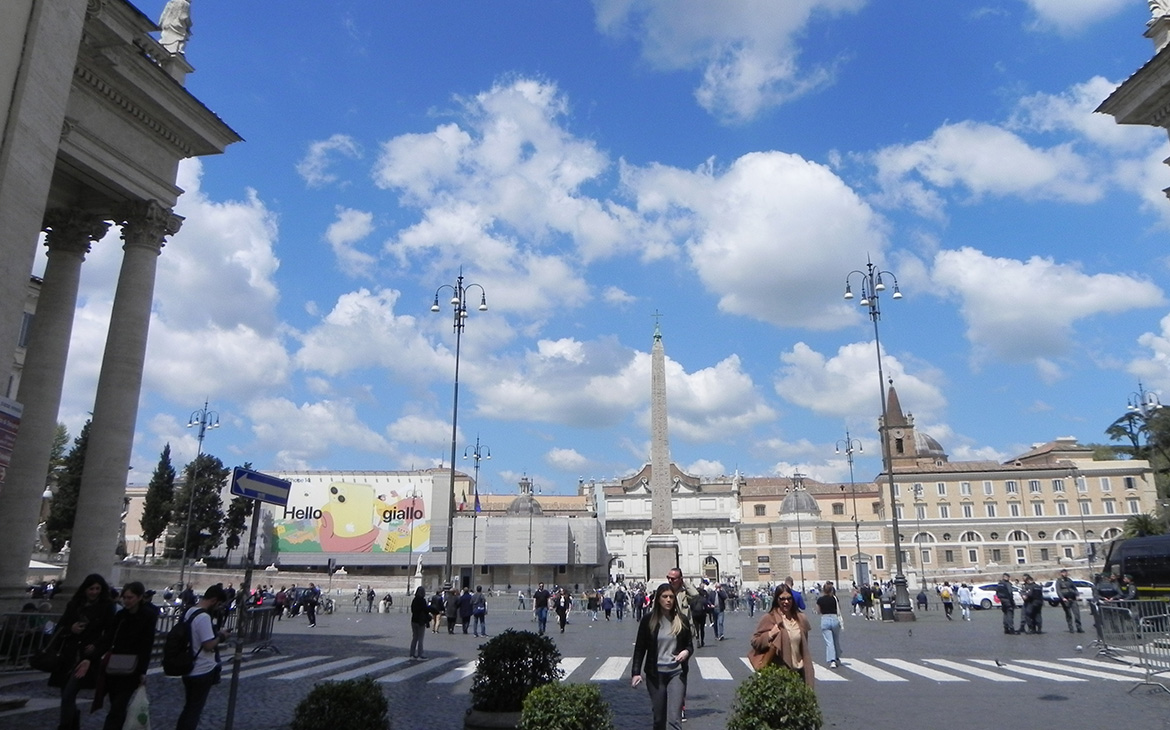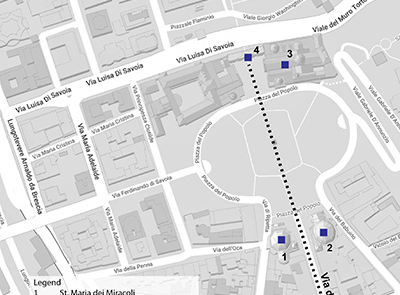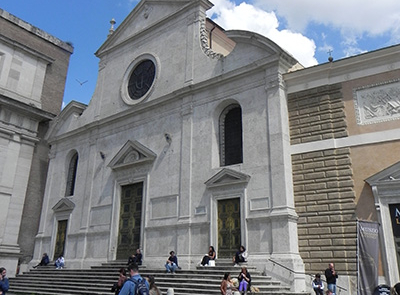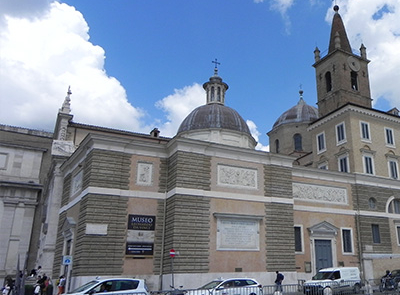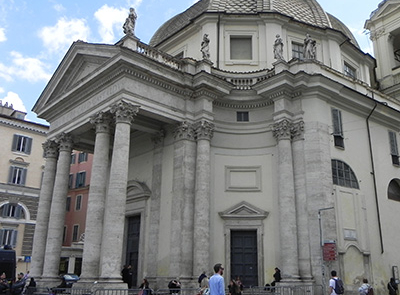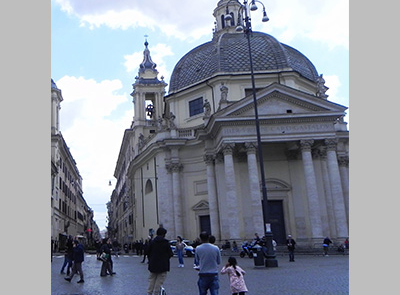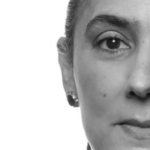
Continuing in my tour in the Piazza del Popolo, in this blog I’ll speak about the churches around this piazza.
The Basilica of Santa Maria del Popolo, is the oldest of the three churches It is located at the north-East part of the Piazza, next to the Porta del Popolo gate. This beautiful church is one of the Minor Basilicas in Rome, its origins began with the construction of a small chapel built in the 10th century at the expense of the Roman people (that is why it takes its name).
Legends of ancient Rome, say that the church was built in the site of the tomb of the emperor Nero; many claims to have seen his ghost haunting this place, until Pope Paschal II decided to build a church there to banish the supposed legend; so, the first project for the basilica was presumably built in 1099 when the new pope began his papacy period. Years later, the chapel was enlarged following a medieval architectonic style, this was a major transformation that included the construction of a new Basilica in the form of Latin cross shape, a Monastery (it is not clear who designed it) and the reconstruction of the façade in a Renaissance style. A century later this church fall in disrepair due to the past of time and lack resources. Then a series of significant changes in this basilica started to happen, all those made by some of the most famous architects at that time.
Then a series of significant changes in this basilica started to happen, all those made by some of the most famous architects at that time: Bramante, Raphael, and Bernini.
Donato Bramante was the first to intervene in these changes, followed by Raphael Sanzio da Urbino (circa 1513), both left their mark in the interior of the Basilica such as, sculptures, and funerary monuments made by Bramante and the fabulous Chigi Chapel made by Raphael, (whose design took inspiration on the Pantheon specially its dome), and the splendid Latin cross vaulted ; the last of the three great architects assigned in the renovation of the church was Gian Lorenzo Bernini (circa 1655) who was commissioned by Pope Alexander VII; he focused on the interior of the three naves , added statues to the arches of the nave, and to the empty chapels, and designed the organ… giving a touch of the baroque style to this basilica.
So, this magnificent church was little by little transformed, but the Renaissance façade remains unchanged and today stands out for its classic and proportionate forms typical of his style such as the big oculus that highlights its symmetry; three entrances provide access to this church: the central entrance with a triangular pediment with decorative elements, the two lateral doorways have also triangular pediments with frieze and arched windows above it. Regardless of which architect, had the greatest influence on this basilica … this is one of the most beautiful examples of the Roma Renaissance.
Continuing walking around the piazza (looking south), one can see the façade of the twins’ churches which are very similar but, in the reality they have some differences. The churches were built per the request of the Pope Alexander VII, who wanted to create a focal point to attract people’s attention in the Piazza. The new project for Piazza del Popolo made by Carlo Rainaldi, included only the proposal of build two symmetrical churches on each side of the Via del Corso, to make emphasis on the “Tridente” (the three streets, via del Balduino, via del Corso and via Ripetta).
The church of Santa Maria in Montesanto (Holy Mountain) located on the South-East of the piazza between via del Corso and via del Baudino, had important names associated to its construction… for instance, in 1662 the architect Carlo Rainaldi started the project with an elliptical shape floor plan …unfortunately his project was interrupted due to the death of the current Pope; few years later, the construction was resumed under the supervision of a different architect, in this case it was Carlo Fontana who designed the dodecagonal dome. Subsequently the famous architect Gian Lorenzo Bernini made some variations to Rainaldi’s original project. Finally in the 18th century, a bell tower was added following the design of the architect Girolamo Theodoli.
The church of Santa Maria dei Miracoli, located on the South-West side between via di Ripetta and via del Corso, has a particular story. It was dedicated to the “Our Lady of the Miracles,” and as it was named in gratitude to a miracle that occurred near that place. The old church was replaced by a new one as a part of Rainaldi’s renovation project, who designed an innovative circular floor plan with four small chapels around it. Unfortunately for Rainaldi, Pope Alexander died in 1667 and his successors did not want to continue the work immediately; so, it was until 1676 that the construction of the church was completed by the architect Carlo Fontana who also designed the dome bases over an octagonal floor plan.
The facades of the two churches were designed using the Pantheon as a model with a dome and portico surmounted by a triangular tympanum…
In summary, the ten churches I have discussed so far in my blogs are the result of my journey from via del Corso, via dei Condotti and piazza del Popolo. I can say that only two churches belong to the Renaissance style and all the others to the Baroque style…this is why Rome the Eternal City is also called “Baroque Rome.”
At this point, I have reached the northern limits of the old Rome. In next blog I’ll explore the modern city along via Flaminia all the way to the Parco della Musica.

